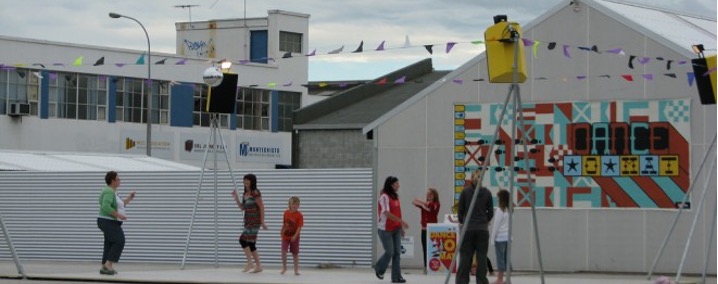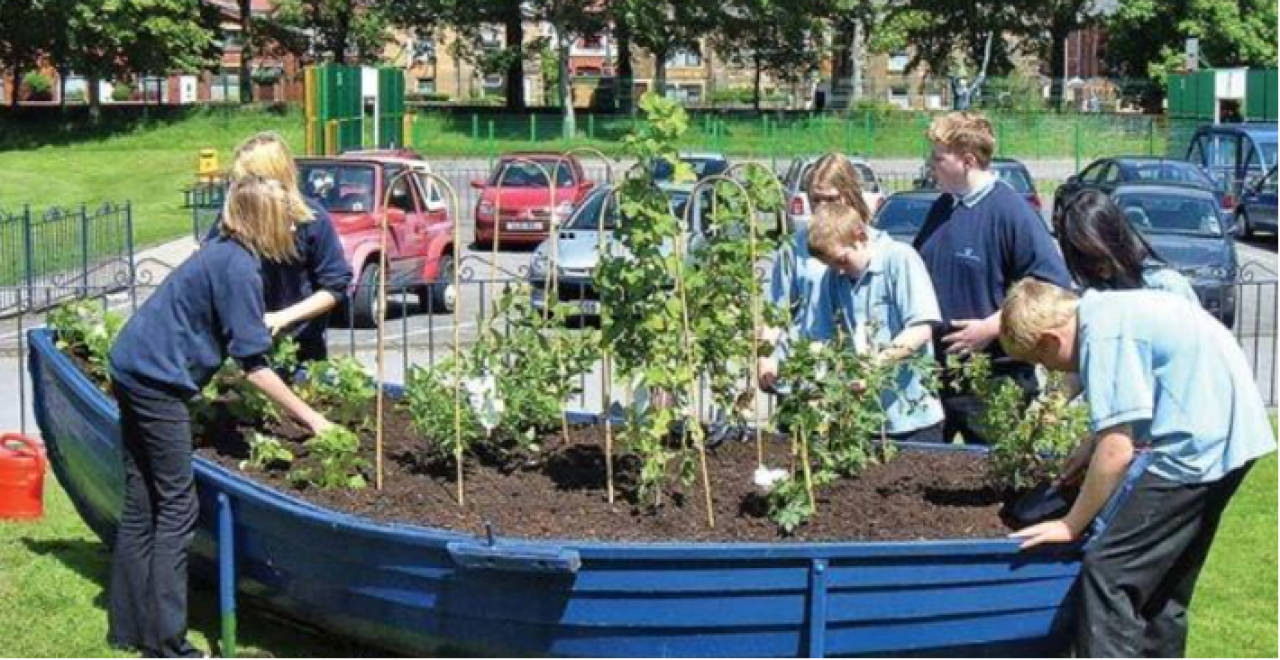Reimagining Parks and Public Spaces
Successful strategies involve combining fitness, learning, and social interaction. The key to success lies in participatory design, strategic partnerships, and creative programming. Below are several innovative approaches:
- Outdoor Learning Gardens and Edible Parks:
Transforming sections of public parks into edible landscapes allows youth to learn by doing. Programs such as Berlin’s Park am Gleisdreieck provide opportunities for young people to grow fruits and vegetables while attending workshops on sustainable food and gardening. This hands-on approach nurtures both curiosity and responsibility. When working in a strategic partnership, e.g. schools and local restaurateurs these learning gardens/edible parks van become very helpful tools in teaching young kids about healthy food habits. Gamified Fitness and Food Trails:
Interactive trails integrate fitness challenges with nutrition quizzes, fostering engagement through digital tools like QR codes or apps. Gamification can link physical exercise with learning, creating a playful and educational atmosphere. More and more examples of this can be found nowadays. These can also be created by mixing health zones with adventure parks.Pop-Up Outdoor Cooking and Wellness Workshops:
Bringing cooking outdoors with mobile kitchens, or food trucks at pop-up events also can be helpful in introducing young people to healthy food, and helping them to create simple, yet healthy meals. A combination with wellness workshops, using mobile fitness gear or organizing a yoga class, can help focus on mental health as well. Interesting examples in this field can be found in Australia, Canada and the United States. The advantage of pop-ups is that you can organize them at different places, even on vacant parking lots or desolated areas where youngsters “hang out”.
Key Steps for Implementation
When rethinking the public space in a city to be used more frequently by adolescents it is of vital importance to involve them from the start. Co-Creation and Participatory Design ensures that programs resonate with their interests. Breakout sessions, like those held during workshops, are effective for gathering youth input and fostering ownership. A second important step is to Build Strategic Partnerships. Collaborations with schools, sports clubs, and local businesses create a network of support. For instance, schools can adopt garden plots or integrate fitness trails into their curricula, while local businesses can provide sponsorships and supplies. A third key element is the necessity to work on Flexible, Season-Specific Programming. Public space activities should be adaptable. Summer can focus on outdoor workshops and festivals, while winter could include indoor cooking sessions or digitally guided fitness challenges. Flexibility ensures year-round engagement. And last, but not least, reaching the target demographic requires Creative Outreach. Social media campaigns, community events, and partnerships with youth influencers can help generate excitement. Examples like “healthy food battles” and geo-location games appeal to digital-native youth.
On top of those key steps, it is worthwhile to “Think Outside the Box”. It seems a logical step to make sports facilities available in public space. But there are naturally also youngsters who “hate sports”. For them, it might be much more interesting to create possibilities for dance or theatre performances (even in the open air). A nice example is the so-called GAP Filler Dance-o-mat, a project in Christchurch (New Zealand).[1]

Another example of thinking outside the box would be to use the opportunity of engaging with youngsters not only to educate them in healthy food issues, but engage them also in different ways, discussing or talking about sexual behavior and health (birth control etc.) or something as simple as preventing skin cancer by using sunscreen, provided for free at public spaces, such as parks and sports facilities.
Conclusion
By rethinking public spaces as multifunctional environments, local governments can address both physical and mental health challenges among youth. Blending play, learning, and community engagement fosters a holistic approach to well-being. As cities across Europe have shown, the potential for public spaces to become thriving hubs for health and connection is immense—what’s needed now is widespread adoption and tailored innovation. The URBACT Action Planning Network RE-GEN offers a great start to accomplish this.
Anja van Hout
[1] See: https://gapfiller.org.nz/project/dance-o-mat/


